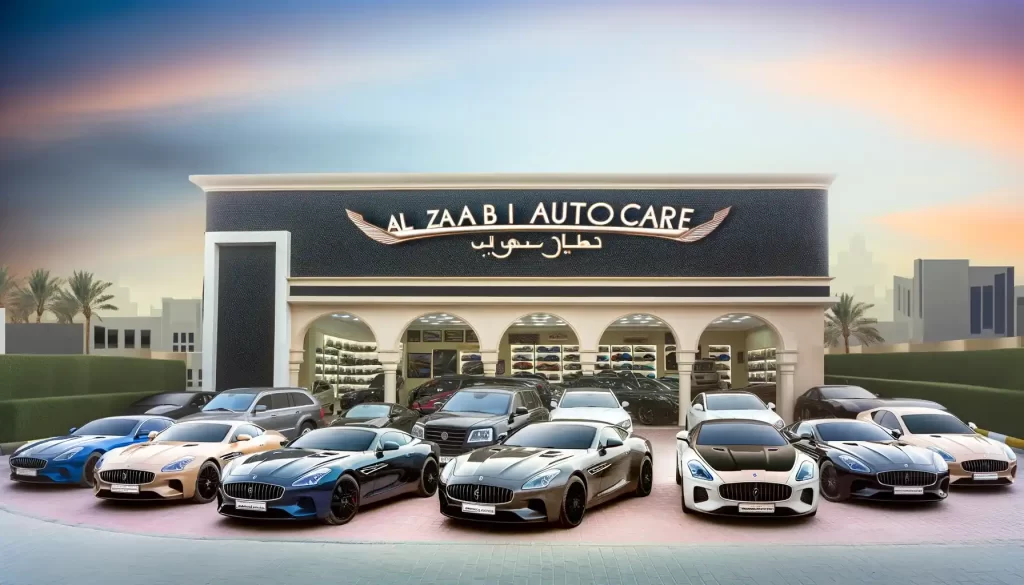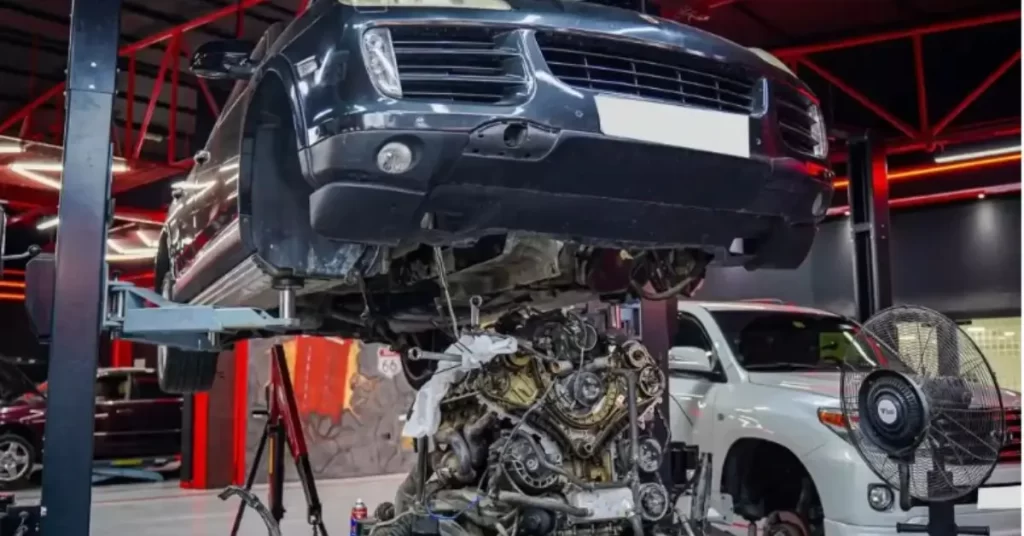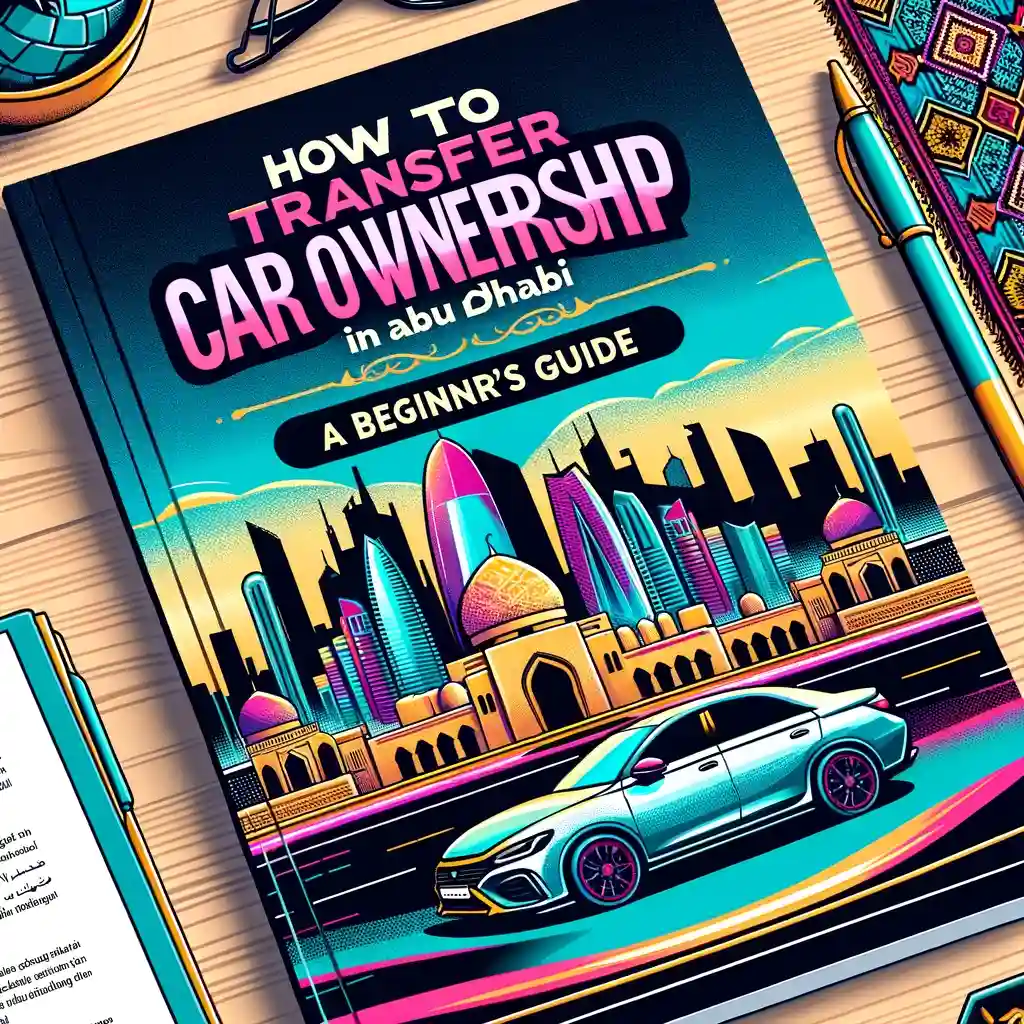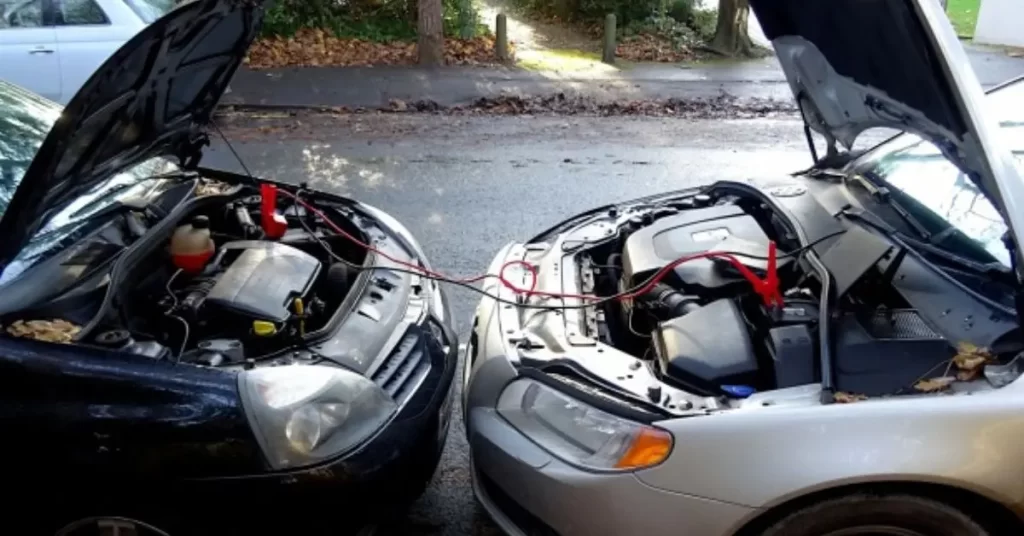Over time, the harsh sun and sandstorms of the UAE can take a toll on car headlights, causing dullness, oxidation, and yellowing. This reduced visibility poses safety issues while driving at night. Some car owners attempt using rubbing compound to restore clarity to hazy headlights, often with mixed results. On the other some car owners get it fixed during their general car maintenance session from experts.
In this article, we’ll answer your question “Can I use rubbing compound on headlights” by examining whether rubbing compound is an effective DIY method for cleaning car headlights in the UAE or if professional reconditioning services are a better choice.
Read on for an in-depth look at the pros, cons, steps, and mistakes to avoid when using rubbing compounds yourself.
What Causes Headlights to Become Cloudy?
1. UV damage from sunlight
The UAE’s intense sunlight and UV rays degrade and damage the headlight lens covers over time. UV exposure causes the plastic to become brittle, faded, and cloudy, significantly reducing light output.
2. Abrasion from sand and dust
Frequent sandstorms and dust in the UAE environment result in abrasion of the headlight surface from particles eroding the top layer of plastic. This abrasion scatters light diffusion.
3. Chemical staining
Road debris, vehicle fluid spills, car wash cleaners, and other environmental contaminants can stain the lens covers, leaving permanent cloudy discoloration and reduced clarity.
4. Heat damage
The high heat levels in the UAE warp and crack headlight plastics over many cycles of hot days and cooler nights. Expanding and contracting leads to cracking.
5. Normal wear
Daily use of headlights, cleaning, and general wear and tear from road vibration and debris gradually take a toll on plastic clarity, causing gradual hazing.
This damage causes the top plastic lens layer to deteriorate, diffusing and reducing light output. Restoring clarity is crucial for safe nighttime driving.
Can Rubbing Compound Remove Cloudiness?
In theory, yes-rubbing compounds contain mild abrasives that can slowly buff away some surface oxidation and fogginess when used properly. However, there are risks of further damage if certain precautions around technique, grit size, and coating aren’t followed.
If opting to use rubbing compound, keep expectations realistic – high-level UV damage and significant cracks or pits in the lens may be beyond repair through polishing alone. Safety should also be the priority. Always wear protective gloves and eyewear when working with abrasive compounds. Work in a well-ventilated area to avoid inhaling any dust particles.
Start with the least abrasive compound and the finest grit sandpaper appropriate for the level of cloudiness. Test in an inconspicuous spot first. Use light pressure and keep the surface lubricated with water. Check your progress frequently. If no improvement is seen after a few minutes, the damage may be too deep for this method to fully correct.
Pros of Using Rubbing Compound on Headlights
Potential benefits of using rubbing compound on mildly cloudy headlights include:
- Low cost if doing it yourself
- Widely available at auto parts stores
- Removes minor surface defects if used properly
- Temporarily restores some clarity
For minor oxidation, rubbing compounds offer a cheap, convenient DIY approach to glean a bit longer life from headlights. It yields limited improvement but is low effort.
Cons and Risks of Using Rubbing Compound
Disadvantages and risks to consider when using rubbing compound on headlights:
- Very labor and time-intensive process
- Can cause deeper damage if grit is too abrasive or pressure is too high
- Does not last – oxidation will quickly reappear
- Does not address causes of damage like UV rays
- Typically fails to fully remove heavy clouding or pits
- Provides only temporary, minor restoration of clarity
- DIY mistakes like using old compounds or wrong materials can worsen hazing
Overall, the rubbing compound is best for slightly hazy headlights, not very damaged ones. It is not a complete fix, but rather a quick temporary improvement requiring repeating frequently.
Step-By-Step Process to Use Rubbing Compound
If you wish to attempt using rubbing compound on mildly oxidized headlights, follow these key steps:
1. Clean the Headlights
Begin by thoroughly washing the headlight lenses with car soap and water to remove any surface dirt, debris, or oily residue. Dry them completely with a clean microfiber towel. Starting with a clean surface will allow the rubbing compound to work more effectively.
2. Mask Off Surrounding Areas
Using painter’s tape, carefully mask off the areas surrounding the headlight lenses, including trim pieces, paint, and metal components. This crucial step prevents accidental damage from the rubbing compound overspray or splatter. Take your time to ensure all edges are fully sealed.
3. Apply Rubbing Compound
Place a small amount of rubbing compound onto a terry cloth applicator pad or a microfiber cloth. Work on one small section of the headlight at a time, about the size of your palm. This allows you to focus on each area and maintain even pressure and coverage.
4. Polish with Light Pressure
Using light to medium pressure, polish the headlight using back and forth or circular motions. Keep the applicator flat against the surface to avoid uneven abrasion. Apply more compound to the pad as needed, but avoid using excessive product which can cause sling-off.
5. Refine with Finer Polish
Once the initial haze and oxidation are reduced, switch to a finer polishing compound or a dedicated plastic polishing product. This will help to refine the clarity and remove any minor abrasions caused by the more aggressive rubbing compound. Continue until you’ve achieved the desired level of transparency.
6. Remove Residue
After finalizing the polishing process, remove all residue from the headlight surface using a clean microfiber cloth. If any rubbing compound spatter is present on the surrounding paint or trim, rinse it off with car soap and water immediately. Dry the headlights and inspect closely in good lighting to check your results.
7. Apply UV Protection
To prevent the headlights from quickly becoming oxidized and hazy again, it’s essential to apply UV-inhibiting sealant or a protective headlight coating product. This final step will extend the longevity and clarity of the headlight restoration. Follow the product instructions for proper application and curing time.
Remember to work slowly and carefully throughout the process to achieve the best possible results. However, keep in mind that heavily damaged or pitted headlights may be difficult for amateurs to correct fully and may require professional resurfacing or replacement.
Mistakes to Avoid When Using Rubbing Compound
Some common mistakes that lead to worse outcomes when using rubbing compound on headlights include molded, thick, or wrong type of rubbing compound – Ensure fresh polish intended for plastics
- Excessive pressure causes deeper scratching – Use light action. Don’t press hard
- Overheating plastic through prolonged buffing – Work in short intervals
- Using gritty cloth or sponge that scratches – Stick to microfiber applicators
- Not protecting paint around headlights from compound splatter
- Polishing crooked instead of straight back-and-forth motions
- Attempting to remove deep pitting or cracks – Compound only fixes surface issues
- Neglecting to reseal plastic leaving it vulnerable again – Seal after compounding
- Skipping washing that leads to rubbing dirt deeper – Clean thoroughly first
Patience and care are key. Consider opting for professional help if damage is moderate to severe for the best results.
Professional Headlight Restoration vs DIY Compounding
For very cloudy, oxidized headlights, professional restoration services typically yield longer-lasting clarity compared to amateur rubbing compound efforts. Professional options include:
- Multi-step polishing processes using specialized compounds
- Sanding and refinishing badly pitted or scarred lenses
- Applying proprietary UV-blocking ceramic coatings
- Resurfacing plastic through lens skimming for serious degradation
- Access to specialty power tools that simplify effort
This level of reconditioning and lens protection goes beyond what most DIYers can achieve in their driveway using basic rubbing compounds. Yes, professional services cost more, but deliver superior, longer-lasting clarity in serious cases.
Get Professional Headlight Restoration in Dubai
If your car’s headlights are cloudy, oxidized, or dangerously dim, trust the experts at Al Zaabi AutoCare to restore maximum visibility and safety. As part of our professional detailing services, our technicians properly resurface and protect your headlights using specialized compounds, tools, and UV inhibitors.
Contact Al Zaabi AutoCare today online to schedule affordable headlight restoration services for crystal-clear nighttime driving in Dubai!
FAQs
Is it safe to use rubbing compounds on plastic headlights?
Yes, rubbing compound is safe for use on plastic headlights when applied correctly. However, it’s essential to follow proper techniques and precautions to avoid causing further damage.
Can rubbing compounds completely remove heavy oxidation and yellowing from headlights?
While rubbing compound can effectively improve the clarity of mildly oxidized headlights, it may not be able to completely remove heavy oxidation, pitting, or yellowing. In severe cases, professional restoration or replacement may be necessary.
How often should I use rubbing compound on my headlights?
Rubbing compounds should only be used as needed to restore the clarity of your headlights. Frequent use can cause unnecessary abrasion and damage to the plastic. It’s recommended to apply a UV-protective coating after restoration to slow down future oxidation.
Can I use rubbing compound on my car’s paint?
While rubbing compound is safe for use on headlights, it is generally too abrasive for use on a car’s paint. Using rubbing compound on paint can cause scratches, swirl marks, and uneven surface texture. Instead, use a dedicated car polish or swirl remover specifically designed for paint correction.










